Banana Carrot Puree

Written by Kenny Ekerin
Fact Checked by Mindsmaking Professionals
1st, December, 2025
This post may contain affiliate links. Please read our disclosure policy.
Start your baby’s solids journey with this easy Banana Carrot Puree! A smooth blend of sweet banana and tender carrot, perfect for babies 6 months and up. Easy to make, gentle on tummies, and ideal for introducing fruits and veggies
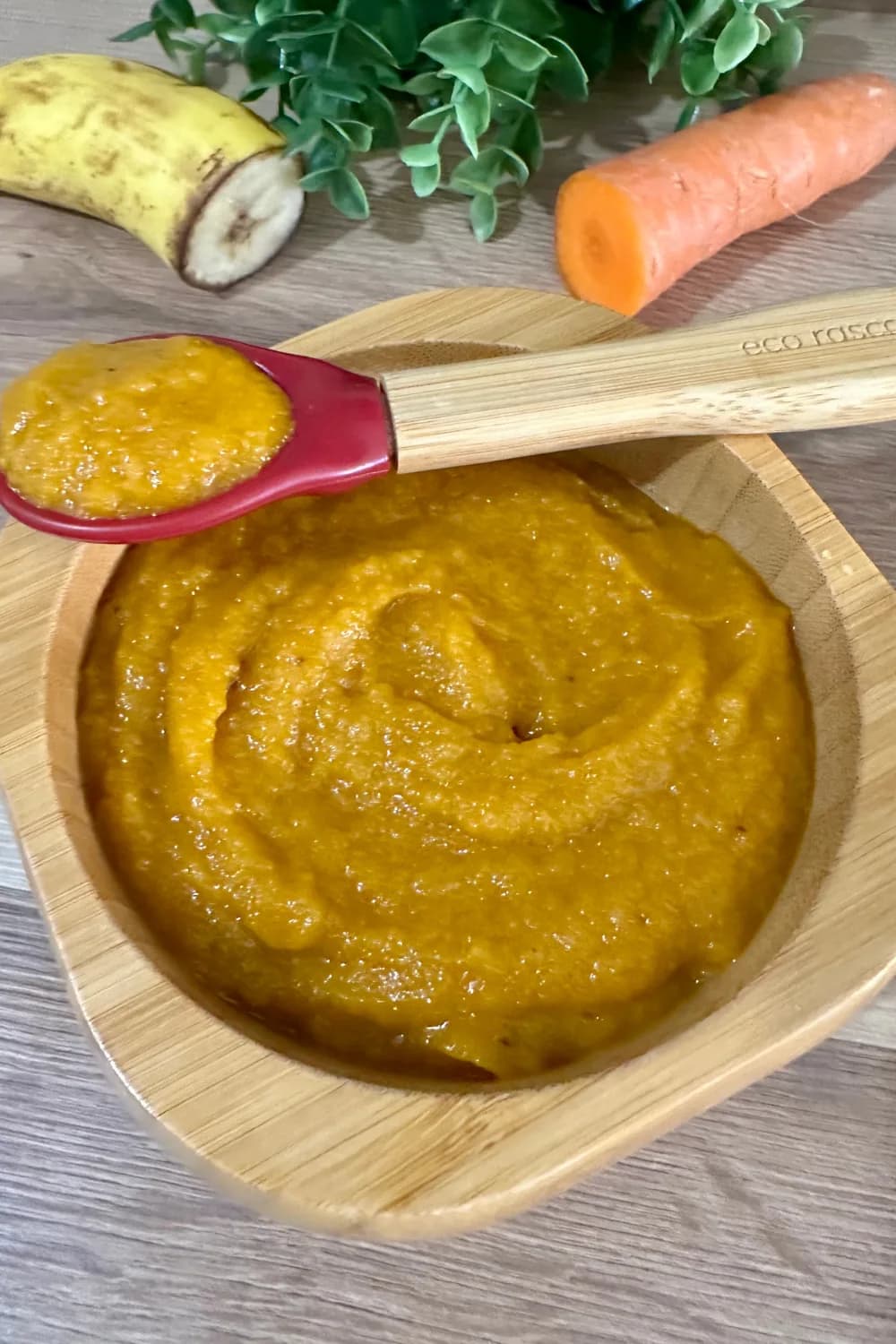
Why This Purée Is Great for Babies
This carrot and banana puree is great for babies because it's nutrient-dense, easy to digest, and offers essential vitamins and minerals. Carrots provide vitamin A for eye health and immune support, while bananas offer potassium for muscle development and energy.
The puree is naturally sweet, making it appealing to babies, and its smooth texture is ideal for introducing solid foods. It’s also gentle on the stomach and can be easily customised as babies grow.
Banana Carrot Puree Recipe
Ingredients:
- 1 medium carrot (peeled and chopped into small pieces).
- 1/2 ripe banana (peeled and sliced).
Mindsmaking

Instructions:
1. Prepare the Carrot: Wash the carrot thoroughly under running water to remove any dirt. Peel the carrot using a vegetable peeler to remove the outer skin. Chop the carrot into small, even-sized pieces. This helps the carrot cook faster and evenly.
Mindsmaking
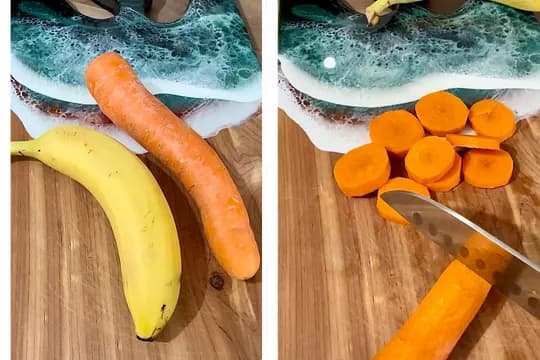
2. Steam the Carrot: Place the chopped carrot pieces into a steamer basket. Fill a pot with a couple of inches of water and bring it to a boil. Once the water is boiling, place the steamer basket over the pot, cover it with a lid, and steam the carrots for about 10-12 minutes until they are tender and can be easily pierced with a fork.
Boiling Method: Fill a small pot with water and bring it to a boil. Add the chopped carrot pieces to the boiling water. Reduce the heat and let the carrots simmer for about 10-12 minutes until they are soft and tender. Once cooked, drain the carrots if you boiled them, and allow them to cool slightly.
Mindsmaking
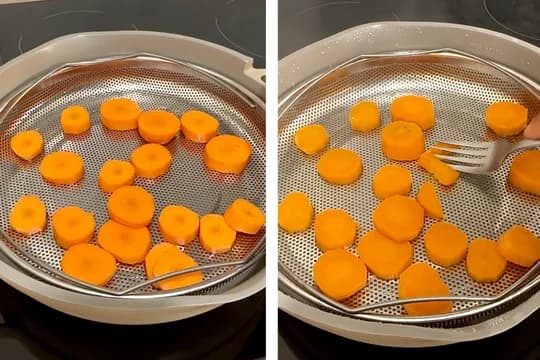
3. Prepare the Banana: Peel the banana and cut half of it into small slices.
4. Blend the Carrot and Banana: Place the cooked carrot pieces and the banana slices into the baby blender or food processor. Blend until you achieve a smooth or textured purée. You may need to stop and scrape down the sides of the blender or food processor to ensure everything is well blended.
If the purée is too thick, you can add a small amount of water (preferably the water used to steam or boil the carrots), breast milk, or formula to reach your desired consistency. Blend again to incorporate.
Mindsmaking
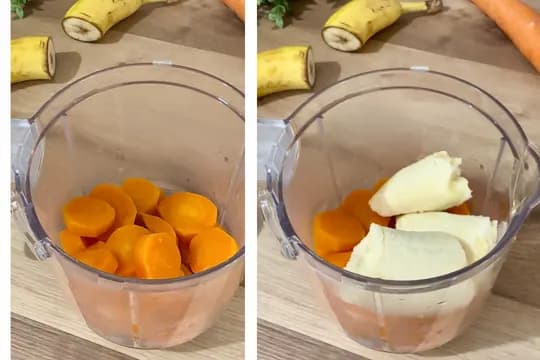
5. Serve: Transfer the purée to a baby-safe bowl. Ensure the purée is at a safe temperature before feeding it to your baby.
Mindsmaking
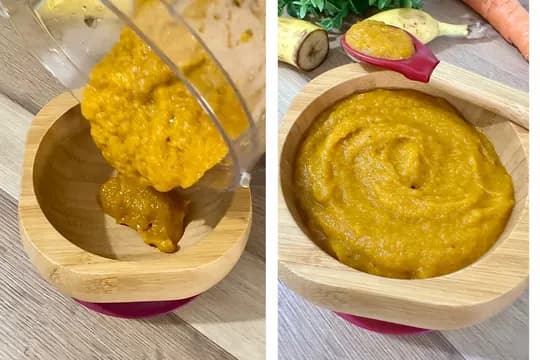
Tips for Success
Uniform Chopping: Cut the carrot into evenly-sized pieces to ensure they cook uniformly.
Keep the Water: Save the water used for boiling or steaming the carrots. It retains nutrients and can be used to adjust the puree's consistency.
Check Tenderness: Make sure the carrot is tender enough to be easily mashed with a fork before blending. Undercooked carrots can make the puree lumpy.
Minimal Overcooking: Don’t overcook the carrot, as it may lose its vibrant colour and flavour.
Adjust Consistency: Add liquid (water, formula, or breast milk) a little at a time to avoid making the puree too runny.
Portion Wisely: Serve small portions to avoid waste. You can always offer more if needed.
Temperature Check: Always ensure the puree is lukewarm or room temperature before feeding. Test it on the inside of your wrist to confirm it’s safe.
Read This Next

Recipe Ebook
Essential Guide to Starting Solids for Babies 6 Months+ - LBH Top 70 Baby Puree & Porridge Recipes eBook.
Start your baby’s solids journey with confidence using this "70 Baby Purees & Porridges" eBook! Created with care, this digital guide is packed with nutrient-rich recipes for babies 6 months and older, including purees and porridges tailored to each stage of your baby’s development.
Recipe Substitutions and Additions
For the carrot, you can substitute it with sweet potato, which offers a sweeter and creamier texture, or pumpkin and butternut squash, both of which provide a smooth consistency and mild sweetness.
If you'd like to replace the banana, apples are a great option, especially when steamed or boiled for a naturally sweet flavour. Pears also work well for a gentle sweetness, while mango adds a tropical twist with vibrant colour and taste.
To enhance the puree, consider adding other fruits like blueberries for antioxidants and a burst of colour, or avocado for creaminess and healthy fats. Vegetables like peas can boost the fibre and protein content, while spinach adds iron without altering the flavour significantly.
For babies over six months old, a pinch of cinnamon or nutmeg can introduce warm, mild spice, and a tiny leaf of fresh mint creates a refreshing twist. You can also incorporate a spoonful of plain yoghurt for creaminess and probiotics or blend in cooked lentils for extra protein and fibre. If you'd like to add grains, adding cooked oatmeal or rice cereal can thicken the puree and make it more filling.
When trying substitutions or additions, always introduce one new ingredient at a time to monitor for potential allergies. Ensure that harder fruits or vegetables are cooked thoroughly for smooth blending, and adjust the liquid content (water, breast milk, or formula) to maintain the desired texture when adding new ingredients. This approach allows you to create variety, enhance nutrition, and keep meals exciting for your baby.
Serving Suggestions
Serve the puree at room temperature or slightly warm, ensuring it's at a safe temperature before feeding by testing a small amount on the inside of your wrist. Use a baby-safe spoon and offer small amounts to avoid overwhelming your baby.
For younger babies, the puree can be served as is, with a smooth texture. As your baby grows and is ready for more texture, you can mash the puree instead of blending it completely, leaving small, soft chunks for practice with chewing.
If your baby is ready for combination meals, mix the carrot and banana puree with plain yoghurt for creaminess, or stir it into baby oatmeal or rice cereal for added texture and nutrition. Another option is pairing it with other purees, such as apple, pear, or sweet potato, for a blend of complementary flavours.
For older babies exploring finger foods, you can use the puree as a dip for soft foods like steamed vegetable sticks or small pieces of bread.
Lastly, any leftovers can be used as a base for baby popsicles or frozen into small cubes for a soothing treat during teething. Always store leftovers properly, refrigerating them in an airtight container for up to 48 hours or freezing for later use.
How to Store
Refrigeration: If you plan to use the puree within the next three days, transfer it to an airtight container immediately after it cools to room temperature. Label the container with the date to track freshness. Store it in the refrigerator and ensure it’s consumed within 3 days.
Freezing: For longer storage, freeze the puree in small portions to make defrosting easier. Spoon the puree into an ice cube tray, filling each compartment. Cover the tray with plastic wrap or a silicone lid, and place it in the freezer until the puree is solid. Once frozen, transfer the cubes into a freezer-safe, labelled ziplock bag or airtight container. The puree can be stored in the freezer for up to 3 months.
Defrosting: When ready to use, remove the desired number of puree cubes and thaw them in the refrigerator overnight. Alternatively, you can place the frozen puree in a heatproof bowl and warm it gently by placing the bowl in a pot of hot water. Avoid microwaving, as it can create hot spots.
Reheating: If reheating is necessary, warm the puree gently on the stovetop or in a microwave-safe bowl for a few seconds, stirring thoroughly to distribute the heat evenly. Always test the temperature before feeding it to your baby to ensure it’s lukewarm or at room temperature.
Important Tips
- Do not refreeze thawed puree.
- Check for any changes in colour, smell, or texture to ensure the puree hasn’t spoiled.
- Store puree in clean, baby-safe containers to maintain hygiene and safety.
Nutrition
Suitable for 6 months +
Nutrition Guide (per serving, approximate):
- Calories: 60–80 (depends on banana ripeness and carrot size)
- Protein: 1–1.5g (mainly from the banana and carrot)
- Healthy Fats: 0g (low-fat content)
- Carbohydrates: 15–20g (natural sugars from banana and carrot)
- Fiber: 2–3g (from both banana and carrot)
- Vitamin A: High (from carrots)
- Vitamin C: Moderate (from banana and carrot)
- Calcium: Trace amounts (from both ingredients)
- Iron: Trace amounts (mostly from carrot)
Note: Nutritional values are estimates and may vary based on ingredient brands and portion sizes.
Frequently Asked Questions
At what age can I start giving this puree to my baby?
This puree is ideal for babies 6 months and up, once they’re ready to begin solids. Always consult your pediatrician before introducing new foods.
Can I use raw carrots or a banana for this puree?
The banana can be used raw, but carrots must be cooked (steamed or boiled) to make them soft and safe for your baby’s digestion.
What’s the best method to cook carrots—boiling or steaming?
Both methods work well, but steaming helps retain more nutrients. Just be sure the carrots are tender enough to blend into a smooth texture.
Can I make this puree in advance?
Yes! You can refrigerate it for up to 3 days or freeze it for up to 3 months. Store in airtight, baby-safe containers and label them with the date.
What if the puree is too thick?
Add a small amount of water, breast milk, or formula to adjust the consistency to your baby’s preference.
Can I add spices or other ingredients?
For babies over 6 months, you can add a pinch of cinnamon or nutmeg. You can also include plain yogurt, cooked lentils, or soft fruits for added nutrition and flavor.
What are some good substitutions for a banana or carrot?
Carrot can be substituted with sweet potato, pumpkin, or butternut squash. Banana alternatives include steamed apple, pear, or mango. Always introduce new ingredients one at a time to monitor for allergies.
Can I use this puree in combination meals?
Absolutely. Mix it with baby oatmeal, rice cereal, or other purees like apple or pear. It can also be used as a dip for soft finger foods once your baby is ready.
Is this puree sweet? Will my baby like it?
Yes, the natural sweetness from banana and carrot usually makes it appealing to babies who are new to solids.
How do I know the puree is at a safe temperature to serve?
After reheating or thawing, test the puree on the inside of your wrist. It should feel lukewarm or at room temperature before feeding.
Was this article helpful?
How many stars are you giving this article?
Leave a comment
Your email address will not be published.
Comments
More From Recipe

Salmon & Pea Rice Balls

Spinach Sweet Potato Purée

Sweet Potato Oats Porridge
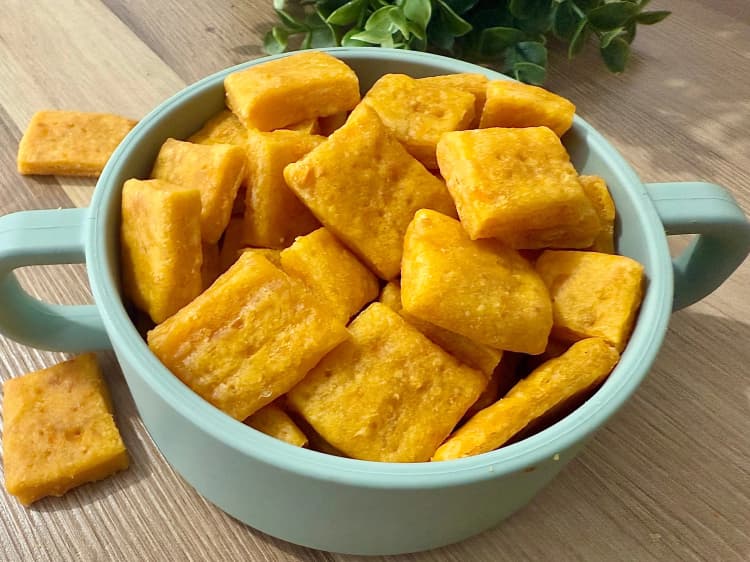
Sweet Potato Crackers
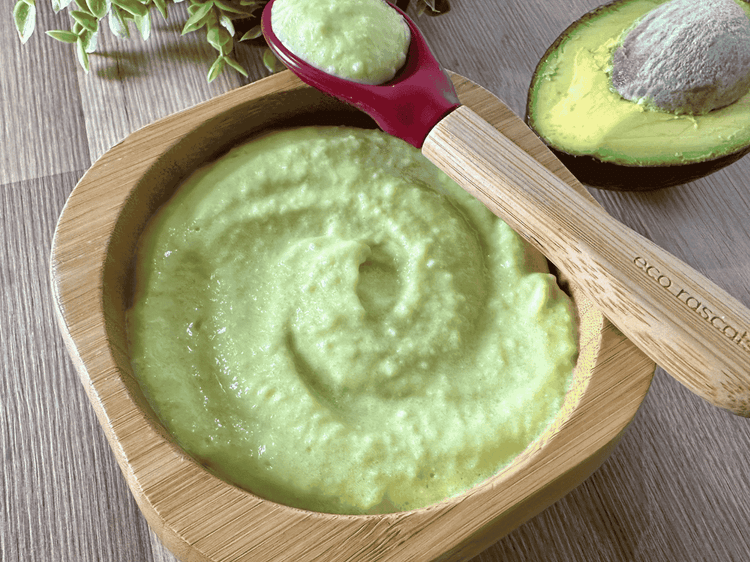
Avocado Rice Puree

Strawberry Oat Cups
Get new recipes to your inbox
Subscribe to our weekly newsletter and get new recipes sent to your inbox!